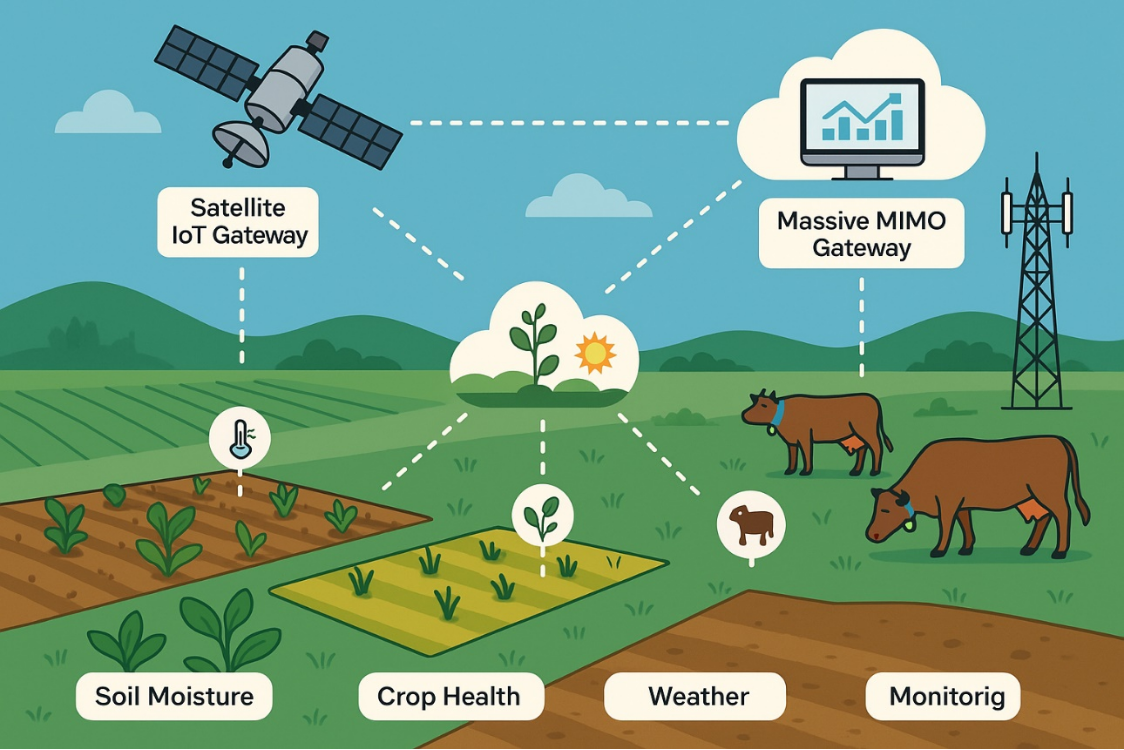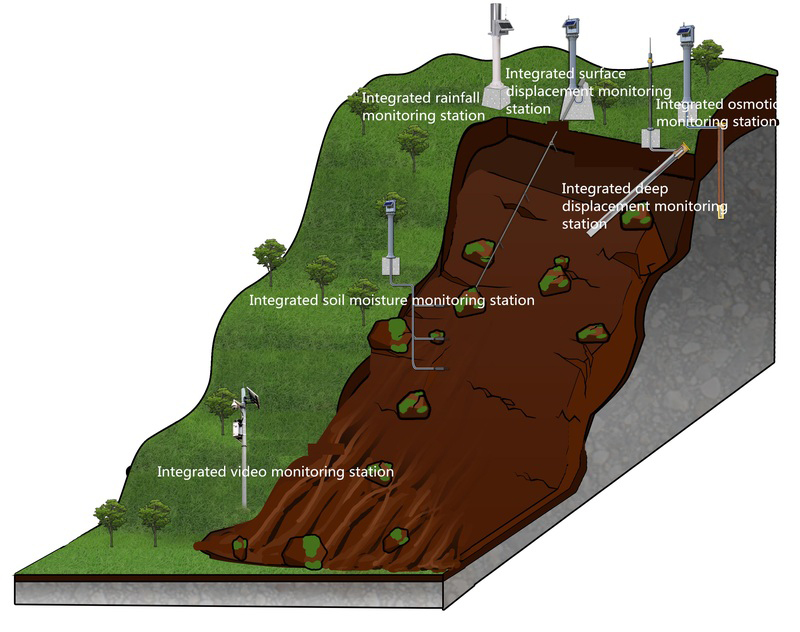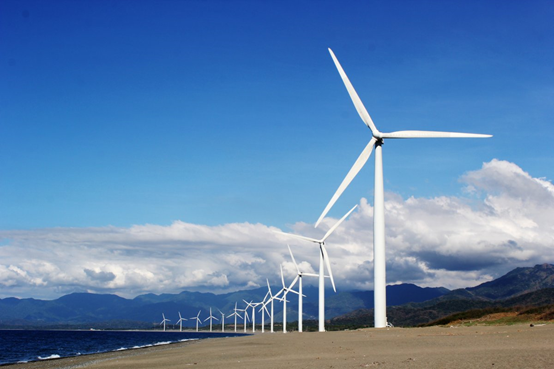Our Smart Agriculture solution combines advanced Satellite IoT and
Massive MIMO gateways to provide reliable, high-capacity
connectivity, ensuring efficient and precise farming practices.
1. Data Collection Sensors measure soil moisture,
temperature, humidity, sunlight, and crop health. Locate farmland properties.2. Connectivity
Satellite IoT Gateway:Ensures connectivity in remote areas,
enabling continuous monitoring without relying on ground
infrastructure. Massive MIMO Gateway: Offers high-capacity,
low-latency connectivity in areas with existing network coverage,
supporting numerous sensors and devices simultaneously. 3. Data
Analysis and ActionCollected data is sent to the cloud, analyzed
in real-time, and presented through user-friendly dashboards.
Actionable insights trigger automated systems such as precise
irrigation, pest control alerts, and farmland management. Key
Benefits: Improved Crop Yields: Precise data-driven irrigation and
crop management. Cost Efficiency: Optimized use of water,
fertilizers, and pesticides. Real-Time Monitoring: Immediate
response to crop diseases, pest infestations, and animal location
issues. Sustainability: Reduced environmental impact through
resource optimization. Ideal Applications: Precision irrigation and
crop monitoring; Automated pest and disease detection; Remote
farmland management; Farm equipment monitoring and management.
Landslide disasters pose significant threats to infrastructure,
human lives, and economic stability. An effective early warning
system is crucial for mitigating risks and enabling timely
interventions. Leveraging advanced IoT technologies, sensor
networks, and real-time data analytics, our solution ensures precise
monitoring and predictive insights for landslide-prone areas. Key
Components of the Solution: Sensor Deployment: Utilize
high-precision sensors, including inclinometers, tilt sensors,
ground vibration sensors, and piezometers. Deploy in critical zones
to monitor soil movement, pore water pressure, and structural
stability. Wireless Data Transmission: Employ long-range and
low-power IoT communication protocols (e.g., LoRa, NB-IoT) to ensure
stable data transfer from remote locations. Real-time data
synchronization with central monitoring systems. Data Acquisition
and Processing: Integrate edge computing for preliminary data
analysis on-site. Centralized data platform for detailed analysis,
anomaly detection, and trend forecasting. Benefits of the Solution:
Early detection of landslide risks. Enhanced situational awareness
and informed decision-making. Reduced response time for emergency
services. Minimized loss of life and property.
Wind turbine systems are critical equipment in wind farms. These
turbines are generally large, heavy, and subject to significant
material wear. Moreover, wind farms are often located in remote or
uninhabited areas. Modern wind turbine towers integrate advanced
technologies, including sensors, signal processing, computing, and
new materials, to prevent potential tower tilt, which can threaten
operational stability and safety. Long-term monitoring of the
tower's vertical alignment using tilt sensors is essential. If the
tilt exceeds safety thresholds, early warnings can be issued to
alert personnel for inspection and maintenance, ensuring stable and
continuous power generation. WIZCONN tilt/vibration sensors enable
real-time continuous monitoring of wind turbine systems during
operation. Installed on critical points such as the turbine
foundation ring and the inner wall of the tower, and integrated with
the turbine control system, these sensors monitor tower structure,
blade status, and tower base levelness, ensuring safe and reliable
wind power generation.




